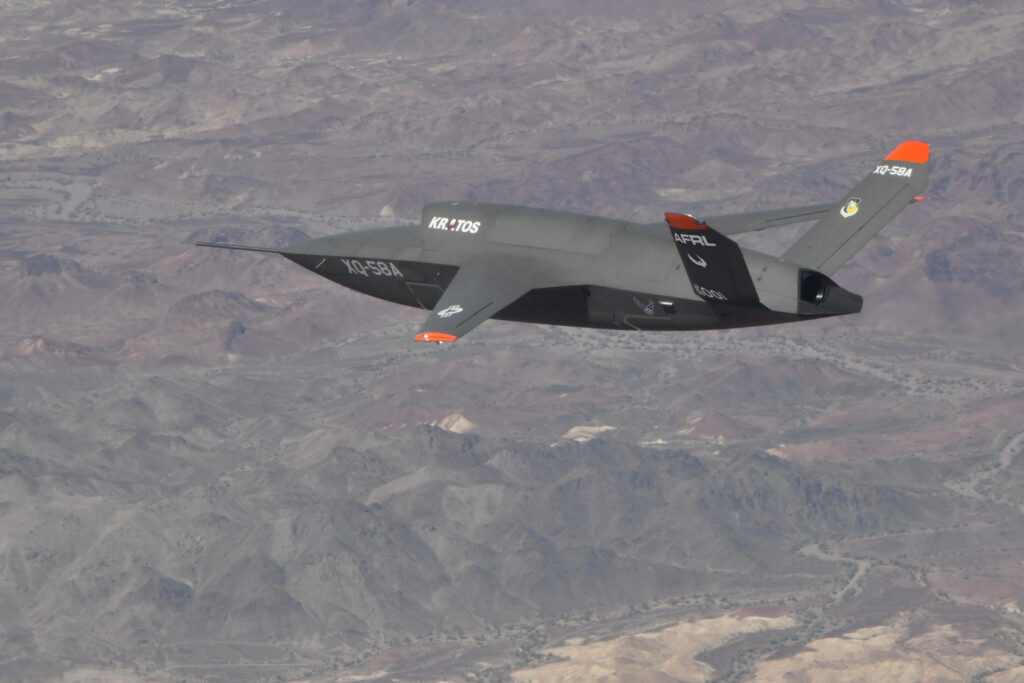Valkyrie Back In The Air With Successful Flight Test

XQ-58A Valkyrie drone built by Kratos
WASHINGTON: After suffering crash damage in October, the XQ-58A Valkyrie test drone successfully completed its fourth test flight yesterday, reaching slightly higher altitudes than in pervious tests, according to the Air Force Research Lab.
The Kratos-built Valkyrie is a platform for Air Force experiments with the Skyborg “loyal wingman” technology, an Air Force spokesman explained. The Skyborg “brain” is envisioned as enabling a fleet of low-cost drones to accompany F-15EX and F-35 fighter jets in the future. Both efforts are part of the Low Cost Attritable Aircraft Technology portfolio managed by AFRL.
Under the Air Force’s Next Generation Air Dominance construct, the idea is for a manned aircraft to lead a formation of autonomous, low-cost, and relatively expendable drones — “attritable” in military jargon — instead of relying solely on expensive manned fighters as wingmen. The Skyborg system carried on the drones would use artificial intelligence to provide data, such as telemetry, flight plans and weather, that a manned wingman’s aircraft normally would provide. Currently, the Valkyrie is the only drone to have flown with the experimental version of Skyborg, but the Air Force isn’t ruling out the eventual use of another drone platform.
Further, acquisition head Will Roper told reporters on Tuesday that if the Skyborg/Valkryie drone system is deemed ready to fly by early April, it will play a key role in the second Air Force test of its Advanced Battle Management System (ABMS). ABMS at the heart of service’s efforts to build a command and control system for multi-domain operations, intended to serve as its contribution to the Joint All-Domain Command and Control (JADC2) architecture now being fleshed out by the Joint Staff and the services.
Skyborg would carry the ABMS gatewayONE, a radio and antenna set — built by Lockheed Martin, Northrop Grumman and Honeywell — which translates the separate machine languages of the F-35 and F-22 fighters to allow them to communicate with a low probability of detection. GatewayONE was successfully tested on the ground during the first multi-service ABMS exercise held Dec. 16-18, using both Navy and Air Force F-35s along with F-22s.
The Valkyrie demonstrator successfully met all of the test objectives, according to AFRL’s statement, and the craft flew higher than in previous tests to better emulate real world conditions, before safely touching down at the Yuma Proving Ground test range in Arizona.
“Flying at this altitude helped us gather important data such as vehicle response to temperature and vibration, which will prepare us as we move toward our next flight test,” said Program Manager Michael Wipperman in the statement.
AFRL has one more test slated for the experimental drone, to be held later this year. That test will be a so-called “capability demonstration” to prove that the drone can support operational needs.